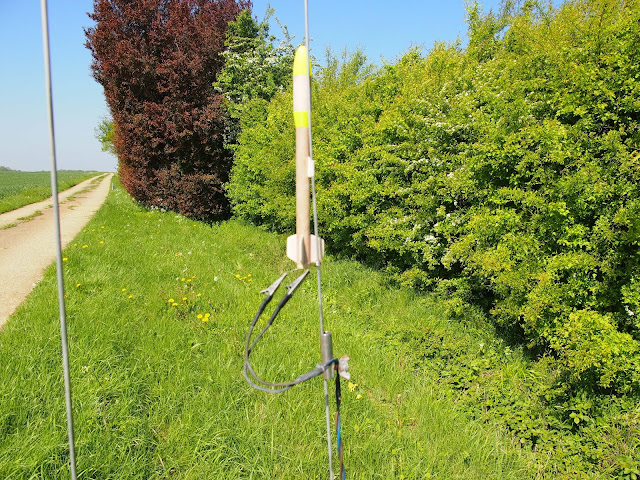The three plywood plates I designed in Inkscape and cut on my CNC router. The reason I went for a threaded bar design instead of a base is that the central plate can be moved within the rails and can therefore be used for very short rocket air frames or can be made to hold the body tube securely whilst avoiding a body tube anomaly such as a camera housing etc. Using threaded bars also gave me maximum adjust-ability and meant that I could assemble the jig with utmost care for parallelism and making everything square.
Looking underneath the fin holding aluminium rails the CNC'd wooden sections have the inverted V to receive a body tube. The point of the V aligns with 2 smaller V sections (seen at the top of this picture just beneath the aluminium angle rails.) this means a fin inserted into the small V is aligned with the centre of the body tube. You can also see in the above picture that there are some small holes and a shock cord passed through with some salvaged toggles to put a bit of tension on it. This shock cord can also be moved to a higher set of holes to support the range of body tubes.
So here is a larger body tube (around 56mm OD) being held in the jig
And above is a picture using the shorter setting and holding a smaller 24mm tube.
Above is a shot showing the adjustable rails that can slide left to right and then be tightened into position. The position is accurately set by inserting a fin into the V section to centre it and also placing a spare fin or a spare piece of fin material at the far end of the jig into a matching central V slot. Then the jig rails can be tightened and after an alignment check the fin glued. Then the tube can be rotated and realigned without resetting the jig to attach the next fin. The fin setup can be seen below with a fin and some fin stock at each end of the adjustable rails.













